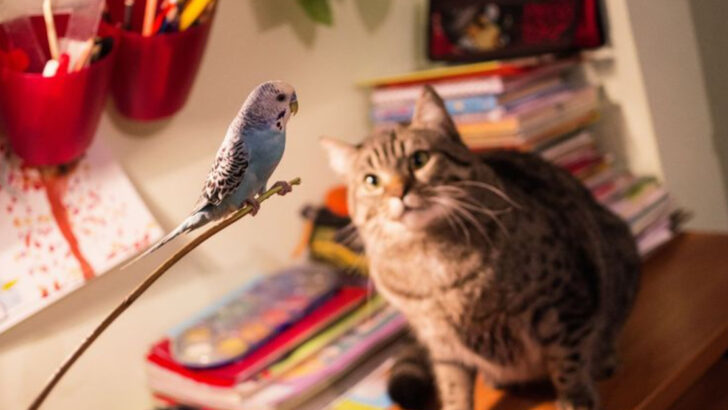The companionship of pets brings joy to many homes, but combining different species requires careful consideration.
Cats and parrots present a unique pairing, raising questions about their ability to coexist peacefully.
This exploration delves into their compatibility, offering insights into how these distinct animals can share a harmonious life.
Whether you’re a cat lover or a bird enthusiast, understanding their dynamics can enrich your multi-pet household.
Read on to discover how cats and parrots can become more than just housemates.
The Curious Cat and the Playful Parrot
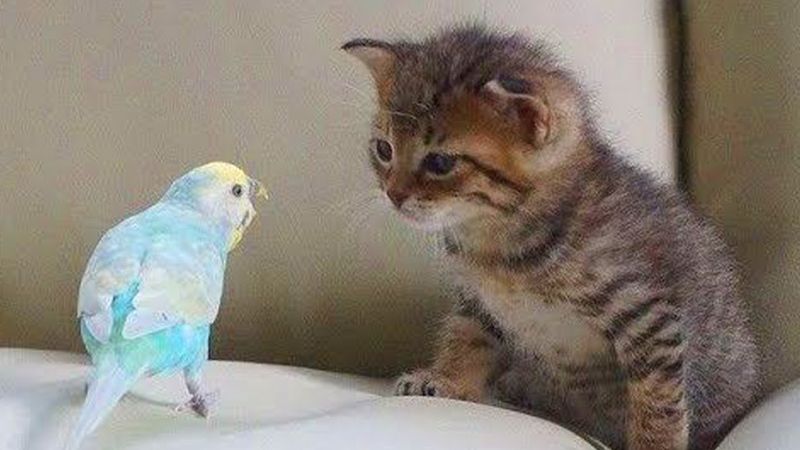
Imagine a sleek Siamese cat meeting a vibrant Macaw for the first time. Their initial curiosity sets the stage for a friendship filled with playful antics. The cat’s inquisitive nature combines with the parrot’s lively spirit, creating a dynamic duo that can entertain for hours.
In this lively pairing, both animals learn to respect each other’s space. Their interactions, although sometimes mischievous, foster a bond that’s both entertaining and heartwarming.
Cats admire the parrot’s aerial skills, while parrots find the cat’s agility intriguing. Together, they form an unexpected yet delightful companionship.
Setting Boundaries: A Key to Harmony
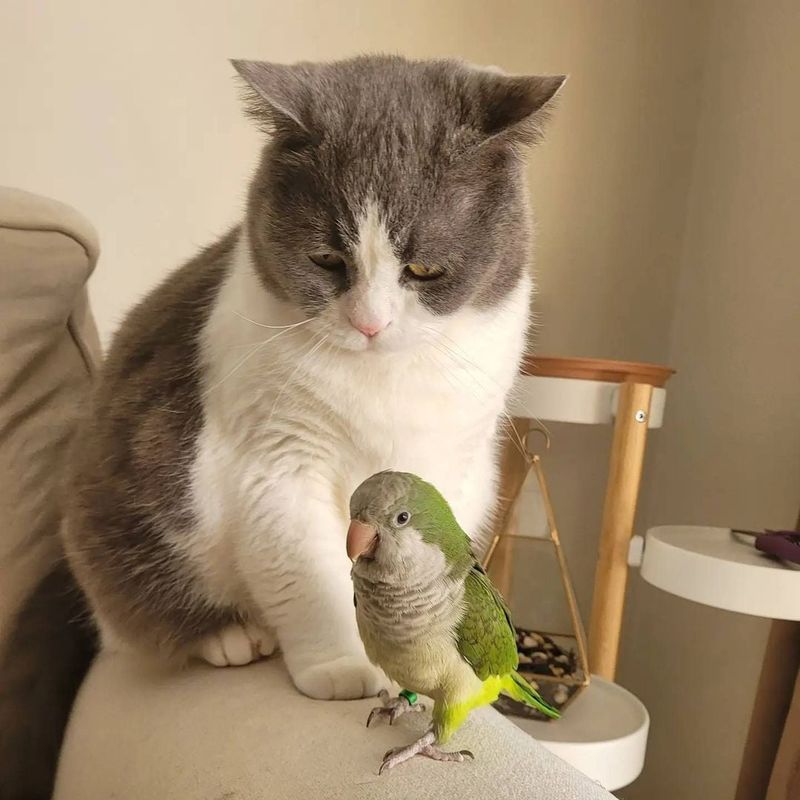
Creating a harmonious environment for cats and parrots requires boundaries. Each pet needs a space to call its own, ensuring safety and comfort. A birdcage filled with toys and a cat tree for climbing provide necessary retreats.
Respecting these zones prevents unwanted conflicts, allowing both animals to thrive. Careful supervision is essential, especially when introducing them. By establishing clear boundaries, pet owners can cultivate a peaceful atmosphere where both the feline and avian companions coexist without stress.
This respect for territory forms the foundation for a serene multi-pet household.
Communication: Understanding Each Other’s Language
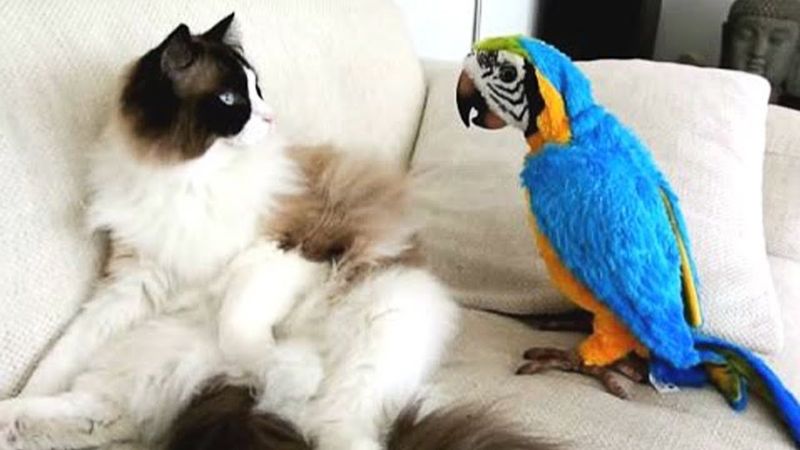
In the world of cats and parrots, communication is key. Cats purr and meow; parrots mimic sounds and express themselves vocally. Observing these interactions reveals a fascinating dialogue between species.
Over time, they begin to understand each other’s cues, building a mutual understanding. A cat’s soft purr can be comforting, while a parrot’s mimicry adds a playful twist to their exchanges.
This language of sound fosters a connection that transcends species barriers, making their relationship not only possible but enriching. Understanding each other’s language is the cornerstone of their companionship.
The Role of Training and Adaptation
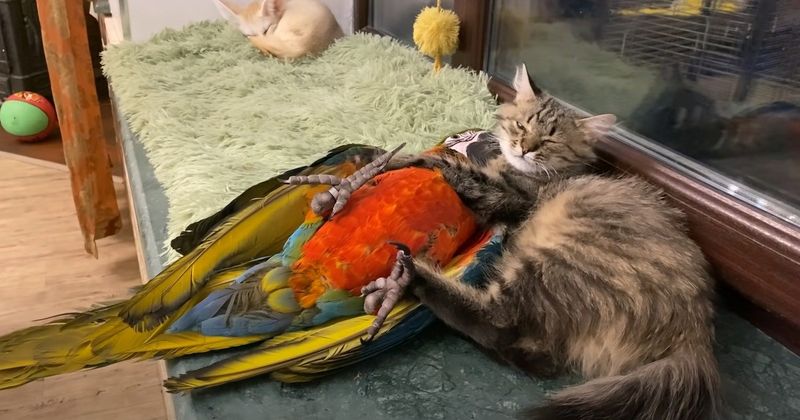
Training plays a vital role in the successful coexistence of cats and parrots. Positive reinforcement techniques encourage good behavior, teaching both animals to interact gently.
Cats learn to refrain from predatory instincts, while parrots adapt to sharing space. This ongoing process requires patience and consistency, but the rewards are substantial.
By investing time in training, pet owners can nurture a relationship that’s both respectful and harmonious. Ensuring that pets adapt to each other’s presence enriches their lives and strengthens their bond.
Creating a Stimulating Environment

A stimulating environment enhances the quality of life for both cats and parrots. Interactive toys and engaging activities keep them mentally and physically active. A parrot swing or a cat puzzle feeder encourages play and curiosity.
These elements prevent boredom, reducing the chances of undesirable behavior. Providing diverse stimuli ensures that both species remain content and well-adjusted.
This lively setting promotes a joyful cohabitation, where both animals can explore and enjoy their surroundings. A well-designed environment contributes significantly to their happiness and compatibility.
Understanding Natural Instincts

The natural instincts of cats and parrots are fundamental in understanding their relationship. Cats, with their predatory nature, may see parrots as prey, leading to potential conflicts. Meanwhile, parrots are highly intelligent and social, often curious about their environment.
Creating an environment where both can safely explore their instincts is essential. Cats can be stimulated with toys, while parrots need interaction and mental challenges.
By acknowledging these instincts, owners can foster a respectful coexistence. Understanding and respecting their nature is the first step in ensuring harmony between the two.
Safety Measures at Home
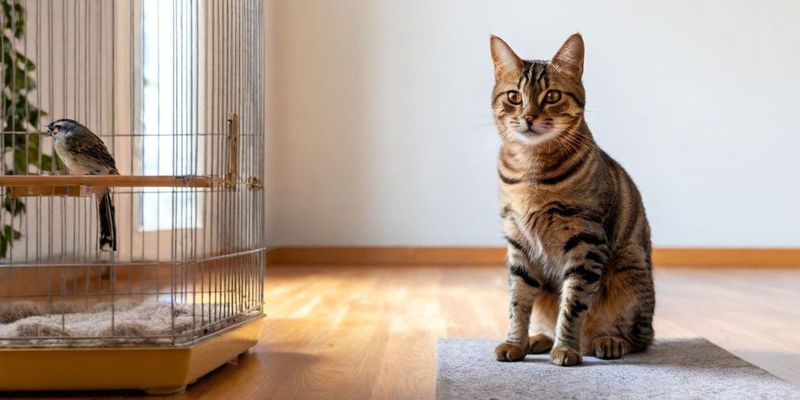
Safety is paramount when housing cats and parrots together. Implementing barriers, such as pet gates or separate rooms, ensures that interactions are monitored and controlled.
Creating distinct play areas for each pet helps minimize conflict. Cats can enjoy climbing structures and scratch posts, while parrots benefit from safe perches and interactive toys.
These precautions not only protect the pets but also provide peace of mind for owners. Maintaining a balance between freedom and safety is crucial in promoting a peaceful home environment for both.
Socialization Techniques
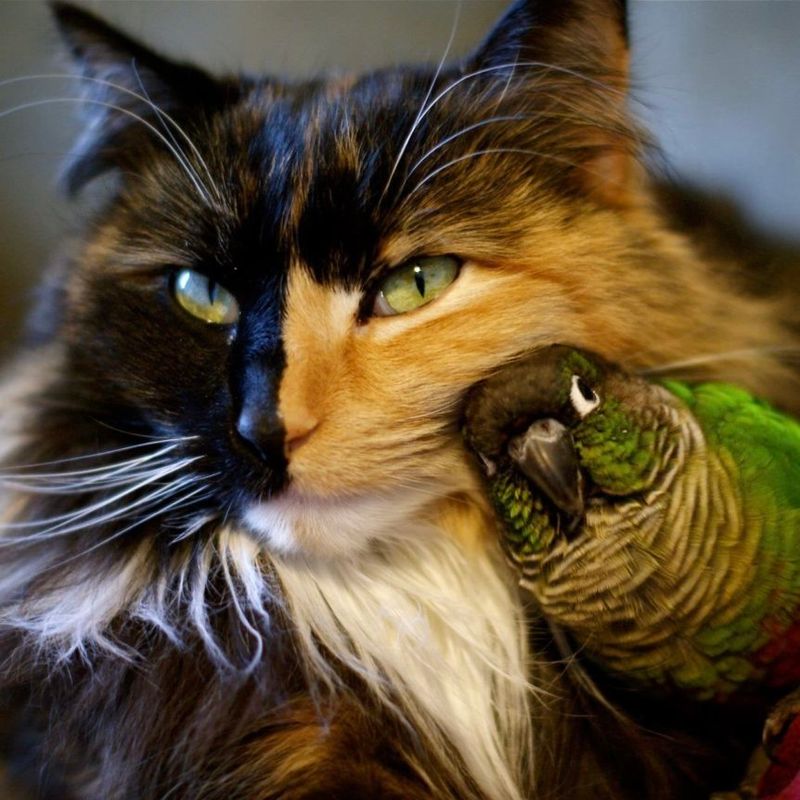
Socialization is key in helping cats and parrots coexist peacefully. Gradual introductions, under supervision, can ease initial tensions. An experienced owner might start by allowing the pets to observe each other from a distance.
Over time, increased interaction can be encouraged, rewarding calm behavior with treats and praise.
By consistently applying positive reinforcement, both pets can learn to associate each other’s presence with positive experiences. This method, while requiring patience, can significantly enhance the possibility of a harmonious relationship.
Nutritional Considerations

Proper nutrition is vital for the health of both cats and parrots. Cats, obligate carnivores, require a diet rich in proteins and fats. In contrast, parrots thrive on seeds, fruits, and vegetables.
Establishing separate feeding areas prevents cross-contamination and ensures each pet receives appropriate nutrition. Careful planning of meal times and locations can also reduce stress.
Understanding their dietary needs not only promotes health but also minimizes competition for food, aiding in peaceful coexistence. Both pets benefit from tailored diets that respect their unique nutritional requirements.
Behavioral Observation
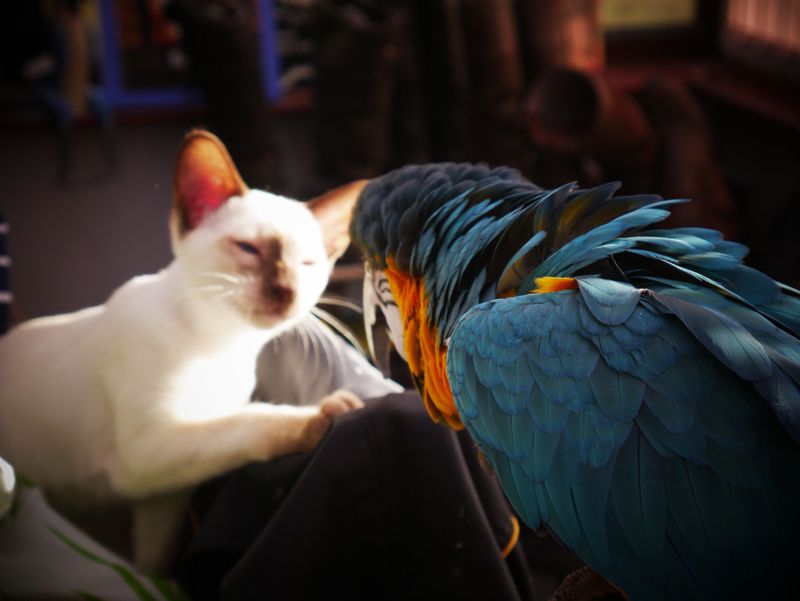
Observing behavior is crucial in understanding the dynamics between cats and parrots. Regular monitoring can identify patterns, such as curiosity or aggression, allowing for timely interventions.
A behaviorist might note how the cat reacts to the parrot’s movements or sounds. These insights help in adjusting the environment or training methods.
By paying close attention to their interactions, owners can address issues promptly, promoting a peaceful and engaging coexistence. Such vigilance ensures that both pets live comfortably and securely together.

